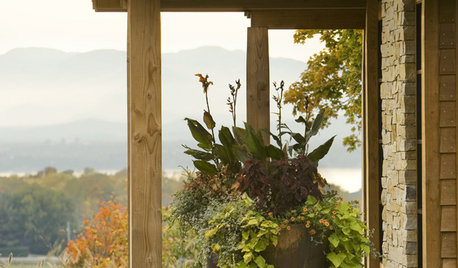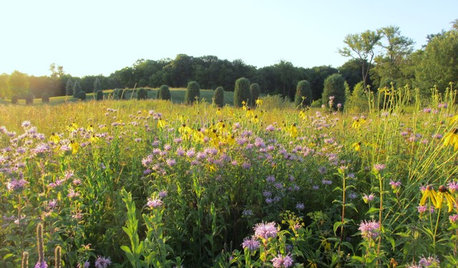Please teach me how to grow roses in pots
vettin
9 years ago
Related Stories

SPRING GARDENINGHow to Grow a Rose Garden in Pots
Everything can come up roses, even without a plot of soil in sight. This step-by-step guide to growing roses in containers shows you how
Full Story
GARDENING GUIDESWhat Kind of Roses Should You Grow?
Want to add the beauty of roses to your garden? Find out which ones, from old-fashioned to modern, are right for you
Full Story
GARDENING GUIDESGrow a Beautiful Fall Garden in a Pot
Welcome autumn with 7 gorgeous plants that thrive in containers and enliven your porch or patio throughout the cooler season
Full Story
ARCHITECTURE4 Things a Hurricane Teaches You About Good Design
When the power goes out, a home's design can be as important as packaged food and a hand-crank radio. See how from a firsthand account
Full Story
GARDENING AND LANDSCAPINGGrow a Lush Privacy Screen
No need to wait forever for patio privacy the green way. These 10 ideas will get your screening up and running in no time
Full Story
EDIBLE GARDENSHow to Grow Your Own Sweet Summer Crops
This guide will help any gardener get started on growing the freshest warm-season veggies and berries for summer
Full Story
FARM YOUR YARD6 Things to Know Before You Start Growing Your Own Food
It takes time and practice, but growing edibles in the suburbs or city is possible with smart prep and patience
Full Story
GARDENING GUIDESHerb Garden Essentials: Grow Your Own Delicious Mint
Pull out a pot for this one. Mint's spreading habit and hard-to-kill nature can be a blessing — if you're properly prepared
Full Story
GARDENING GUIDESWhat Prairies Teach Us About Garden Design
Wild spaces offer lessons for home gardeners about plants, pollinators and the passage of time
Full Story
MOST POPULARSummer Crops: How to Grow Sunflowers
Savor snack-tastic sunflower seeds once the radiant blooms have faded — if the birds have saved you any, that is
Full StoryMore Discussions








roseseek
User
Related Professionals
Billerica Landscape Contractors · Stamford Landscape Contractors · Cockeysville Landscape Contractors · Columbine Landscape Contractors · Dinuba Landscape Contractors · Downey Landscape Contractors · Fort Wayne Landscape Contractors · Milton Landscape Contractors · Nanuet Landscape Contractors · Palos Verdes Estates Landscape Contractors · Paramus Landscape Contractors · Long Branch Swimming Pool Builders · Fairfax Siding & Exteriors · Greenville Siding & Exteriors · North Highlands Siding & Exteriorscatspa_NoCA_Z9_Sunset14
cath41
michaelg
AquaEyes 7a NJ
mad_gallica (z5 Eastern NY)
odyssey3
view1ny NY 6-7
catspa_NoCA_Z9_Sunset14
view1ny NY 6-7